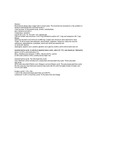| dc.description.abstract | Biochemical assays play a major role in recent years. The biochemical composition is the yardstick to
measure and assess the nutritional quality o
f food sources. In the present study, protein, carbohydrate,
lipid, moisture and ash in
Litopenaeus vannamei
was 35.69, 3.20, 19, 76.2 and 1.2% respectively.
Calcium content was maximum (154.5 mg) followed by sodium (67.7 mg) and potassium (56.7 mg).
Manga
nese was reported to be minimum (0.898 mg). Copper and chromium were observed in trace.
Totally 18 amino acids were detected, among these, argentine, histamine, isoleucine ,leucine,
methionine, phenylalanine, tryptophan, lysine and valine are essential ami
no acids and alanine,
asparagine, aspartic acid, cysteine, glutamic acid, glycine, proline, serine and tyrosine are non
-
essential amino acids. In individual essential amino acids, valine (23.72%) was maximum, followed by
lysine (13.42%) and methionine (13.
06%). Histidine was minimum (1.08%). Glycine (9.8%), cystine
(5.56%) and proline (4.26%) contributed as major non
-
essential amino acids. Ten individual fatty acids
were identified, which includes both unsaturated and saturated fatty acids. Three saturated
fatty acids
(SFA) were recorded (Palmitic acid, Margaric acid and Stearic acid). The polyunsaturated fatty acids
(PUFA) were the most dominant common fatty acids (38.5%) with the higher levels of linoleic acid
(16.3%) and alpha
-
linolenic acid (11.2%). Olei
c acid is the only monounsaturated fatty acid (MUFA)
contributed 12.48% of total fatty acids. At the same time the Omega
–
6 and omega
-
3 fatty acids
accounted for 16.3 and 35.4% of the total PUFA (51.7%). the present study confirming that based on the
re
sults,
L.vannamei
species can be considered as a good source of fatty acid as well as protein. | en_US |


